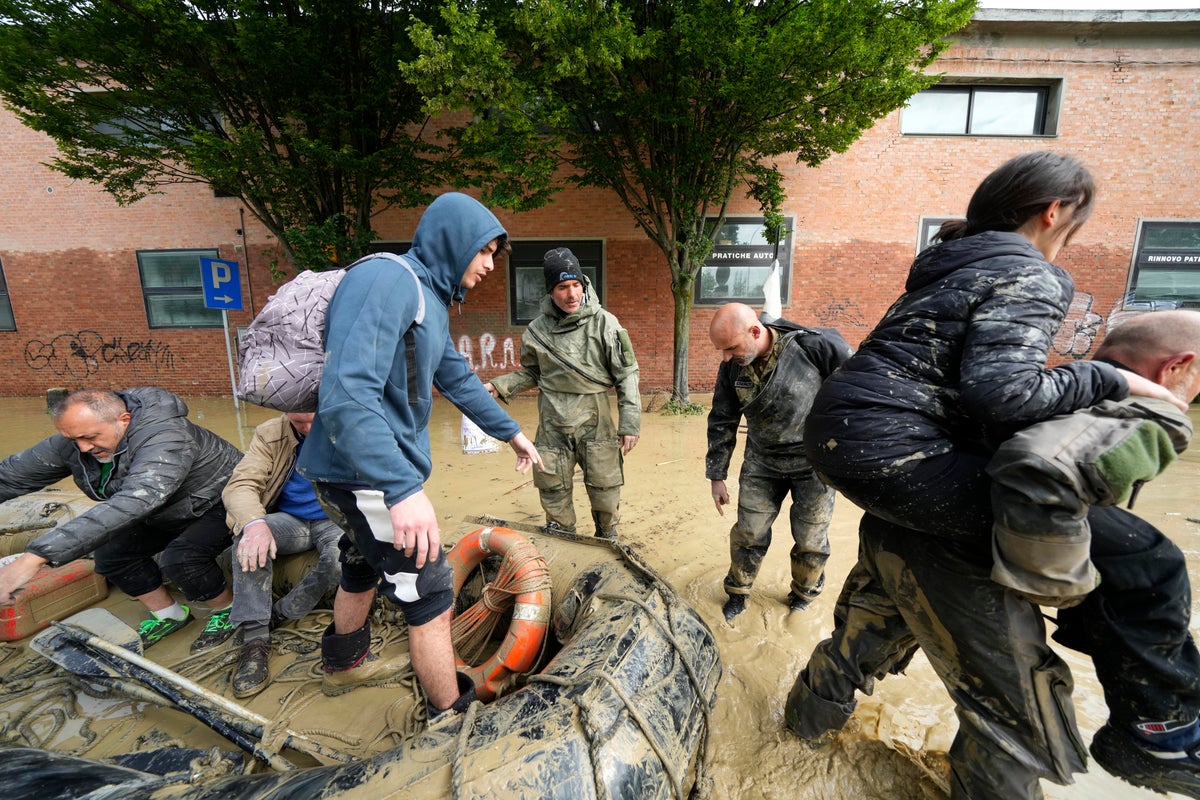
Rescue crews worked Thursday to reach towns and villages in northern Italy that are cut off from highways, electricity and cell phone service following heavy rains and flooding, as farmers warned of “incalculable” losses and authorities began mapping out cleanup and reconstruction plans.
The death toll from rains that pushed two dozen rivers and tributaries to burst their banks stood at nine, with some people still unaccounted-for, said Stefano Bonaccini, president of the hardest hit northern region of Emilia-Romagna.
The drought-parched region had already estimated some 1 billion euros in losses from heavy rains earlier this month, but Bonaccini said the losses now reached multiple billions given the widespread damage to farmland, storefronts and infrastructure from this week's flooding.
By Thursday morning, some parts of the city of Faenza were still underwater, with cars submerged and basements flooded by thick, gooey mud. One family standing on their balcony said they didn't have electricity, gas or food.
More than 10,000 people fled their homes, some plucked from rooftops or balconies by rescue helicopters and others ferried out on civil protection dinghies. One family with a 20-day-old baby was rescued Thursday morning, said Cesena Mayor Enzo Lattuca.
Italian farm lobby Coldiretti said more than 5,000 farms with greenhouses, nurseries and stables had been flooded, covering thousands of acres of vineyards, fruit groves, vegetables farms and grain fields. It said damage estimates were “incalculable,” because not only current harvests but future ones could be affected, given the permanent damage to roots from the “suffocating” mud of the runoff.
Bonaccini has called for the national government to declare a state of emergency, something that is likely when the Cabinet meets next week following Premier Giorgia Meloni’s return from the Group of Seven summit in Japan. Already, the region has said it is looking to reconstruction efforts and restoration of vital infrastructure.
The Superior Institute for Environmental Protection and Research has identified Emilia-Romagna as one of the most at-risk Italian regions for flooding, where both territory and populations face higher risks of “hazard scenarios” than the rest of the country, given its topography and geography –- sandwiched between the Apennine mountain chain and the Adriatic Sea.
The region was first hit by intense rain earlier in May, which combined with the exceptional rainfall tested the ability of drought-parched soil to absorb, the institute said, adding that high sea elevations and bora winds against the coast may have contributed to the flooding of rivers and tributaries.







